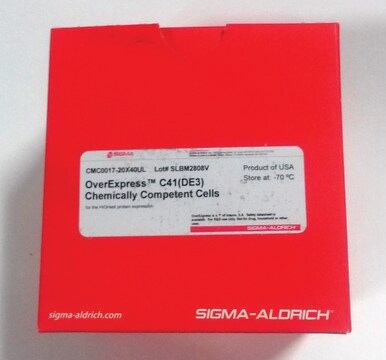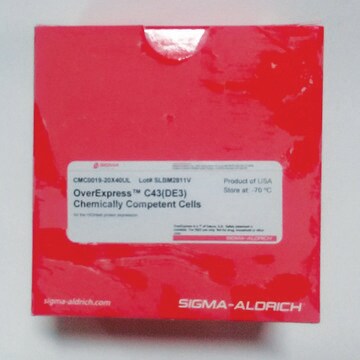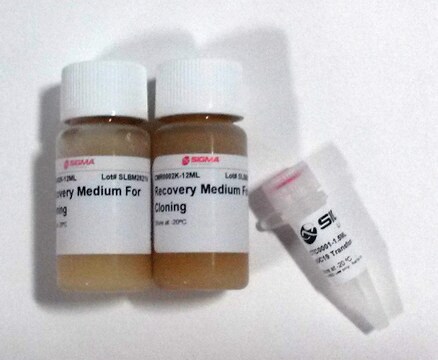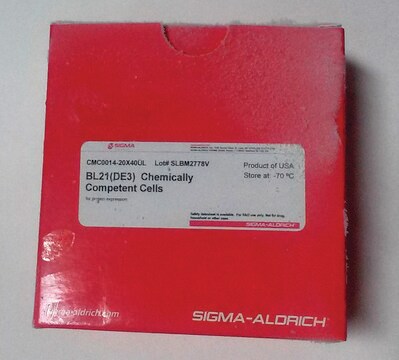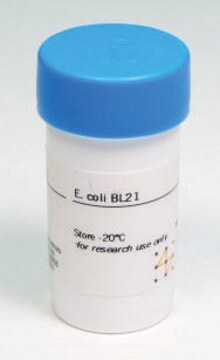CMC0018
OverExpress™ C41(DE3) pLysS Chemically Competent Cells
Escherichia coli, rod shaped
Sinonimo/i:
Chemically competent cells
About This Item
Prodotti consigliati
product name
OverExpress™ C41(DE3) pLysS Chemically Competent Cells, for the highest protein expression
Origine biologica
Escherichia coli
Grado
for molecular biology
Modalità di accrescimento
adherent or suspension
Morfologia
rod shaped
tecniche
microbiological culture: suitable
Trasformazione cellulare
competent cell type: chemically competent
transformation efficiency: ≥1 x 106 cfu/μg
Condizioni di spedizione
dry ice
Temperatura di conservazione
−70°C
Categorie correlate
Descrizione generale
Genotype
F – ompT hsdSB (rB- mB-) gal dcm (DE3) pLysS (CmR)
Caratteristiche e vantaggi
- Express genes cloned into any T7 vector with these BL21(DE3) derivatives
- Effective in expressing toxic & membrane proteins
- Cited in over 350 research articles
Componenti
- OverExpress C41(DE3) pLysS chemically competent cells
- pUC 19 transformation control DNA
- recovery medium for expression
Note legali
Prodotti correlati
Codice della classe di stoccaggio
10 - Combustible liquids
Certificati d'analisi (COA)
Cerca il Certificati d'analisi (COA) digitando il numero di lotto/batch corrispondente. I numeri di lotto o di batch sono stampati sull'etichetta dei prodotti dopo la parola ‘Lotto’ o ‘Batch’.
Possiedi già questo prodotto?
I documenti relativi ai prodotti acquistati recentemente sono disponibili nell’Archivio dei documenti.
I clienti hanno visto anche
Protocolli
Protocol for OverExpress™ Chemically Competent Cells. Product Numbers: CMC0017, CMC0018, CMC0019, CMC0020, CMC0023, CMC0024
Il team dei nostri ricercatori vanta grande esperienza in tutte le aree della ricerca quali Life Science, scienza dei materiali, sintesi chimica, cromatografia, discipline analitiche, ecc..
Contatta l'Assistenza Tecnica.